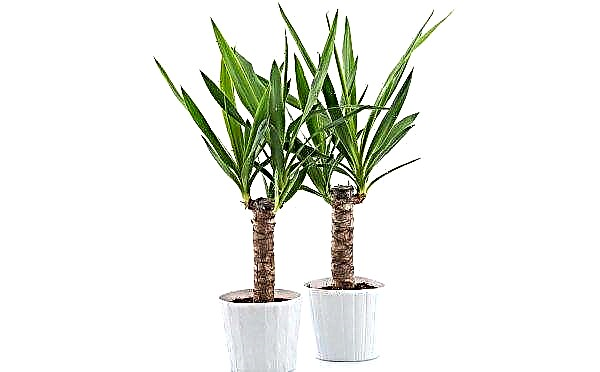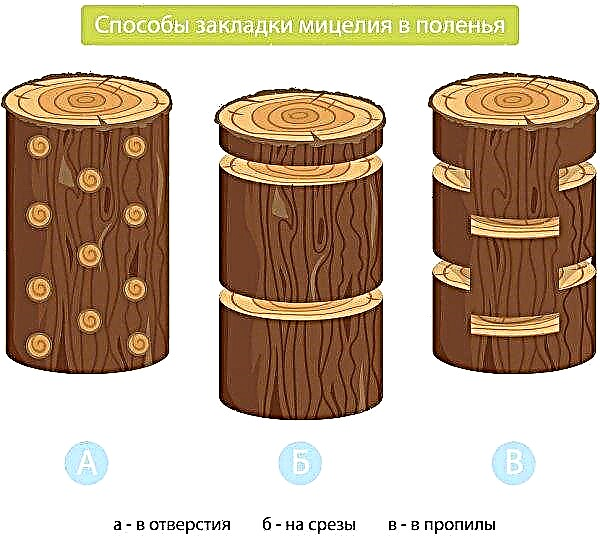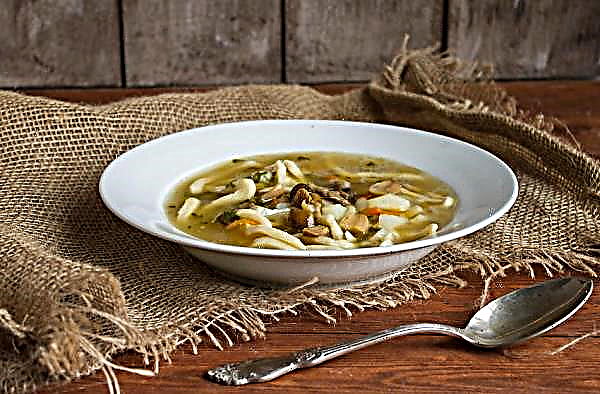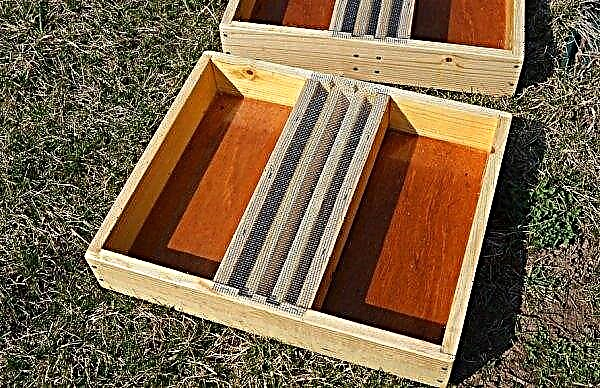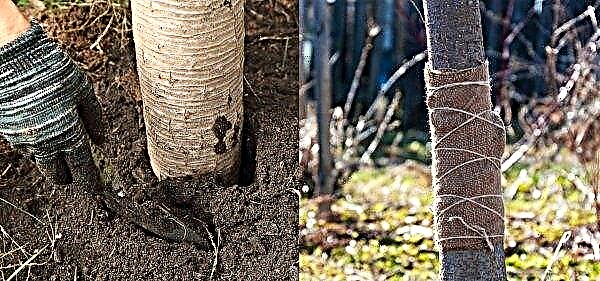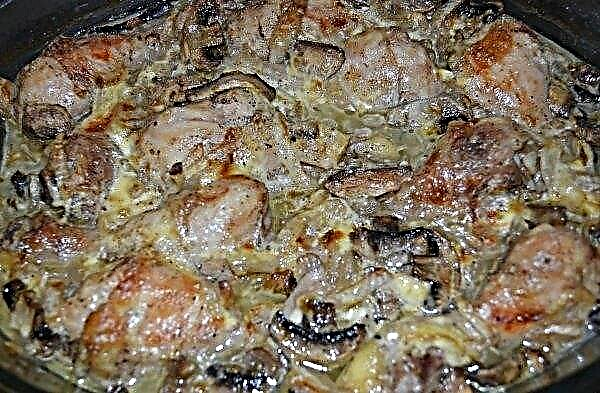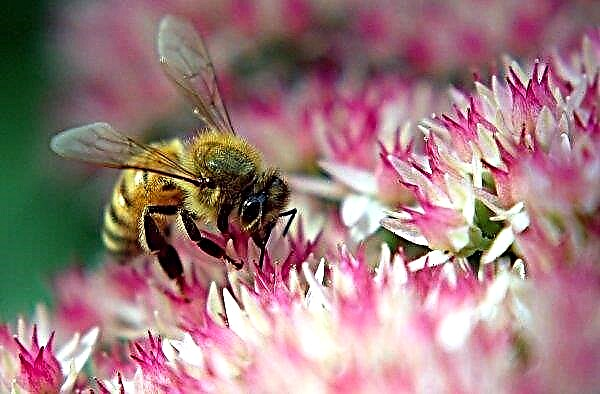Among the famous varieties of zucchini, it is worth paying attention to Cavili F1, which compares favorably with its counterparts in its characteristics. The Netherlands are his homeland, but this did not prevent him from feeling good in our latitudes. Let's get acquainted with how to properly grow this vegetable and take care of it.
Description and characteristics of the hybrid
Cavili F1 has the following characteristics:
- The bush is voluminous, but it does not spread in different directions.
- The stems are green, spread along the ground, there are internodes.
- The leaves are large, painted dark green, there are white spots.
- The flowers are large, painted yellow, on one bush there are flowers of both sexes, sometimes bisexual.
- The fruits are light green with a barely noticeable mesh, the color is evenly distributed, oblong, not curved, slightly ribbed, ripen for about 40 days. The average size is 20 cm with a weight of 300 g.
- Harvested for 2 months at the level of 4-5 kg / m2.
- The pulp is strong, painted white, moist, aromatic.
- The roots are strong, branched.
Did you know? Italians were the first among Europeans to appreciate the taste of zucchini in the 18th century. For 2 centuries, vegetables were grown in them as a decorative decoration.
Advantages and disadvantages of the variety
- Benefits:
- matures quickly;
- can be grown on small plots of land;
- gives a high yield;
- tasty;
- the fruits ripen several times per season;
- after ripening, the vegetable can remain on the bushes, preserving the juiciness;
- the fruits differ slightly in size;
- well resists diseases;
- does not require much care;
- can be used for canning;
- Suitable for growing in greenhouses and indoors.
- The disadvantages of the plant include:
- Self-pollination, which from a biological point of view does not make it possible to exchange genes between different plants and thus improve performance.
- Fear of low temperatures.
- The need for plentiful watering.
- The inability to independently collect seeds for planting.
Video: Characteristics of Cavilli F1 squash
The benefits of zucchini Cavili F1
- Useful properties of Cavili are:
- Low calorie content.
- Do not irritate the gastrointestinal tract.
- Improve digestion.
- Helps reduce bad cholesterol and remove toxins.
- In folk medicine, they are used as a wound healing, antiallergic and diuretic.
- Positive effect on the functioning of the nervous system and metabolism.
Growing zucchini squash
You can grow this variety of zucchini:
- In an open area (on ordinary or warm beds).
- In the greenhouse.
Crop rotation
Crop rotation rules include:
- You can not plant Cavili in the ground on which pumpkin, cucumbers, squash, squash grew last season.
- You can plant Cavili in the ground on which legumes, tomatoes, potatoes, cabbage, winter wheat grew last season.
Did you know? In many countries, they love dishes from the flowers of male zucchini in stuffed, fried, boiled or stewed foods. Female flowers may be bitter due to the pestle.
Outdoor cultivation
Before planting Cavili in open ground, you must choose a place that should be:
- well lit;
- without drafts;
- not prone to waterlogging;
- with rich soil with a light composition and acidity of 6.5–7 pH.

Greenhouse cultivation
Thanks to compact bushes, the hybrid has proven itself when grown in greenhouses, which can not be done in regions with a cold climate. With this method, you can protect the plant from frost, increase the yield and get it much earlier. The soil is prepared and fertilized in the fall, in the spring only nitroamophoska is allowed.
Important! Because Cavili ripen quickly, then after planting in fertilized soil they do not need to be fed, otherwise instead of a large number of vegetables in greenhouse conditions you will get many leaves and high shoots.
Growing Zucchini Zucchini on Warm Beds
A warm bed is a structure for growing zucchini or other vegetables, which can increase productivity by warming and enriching the soil beneath them.
When using warm beds:
- the number and average weight of ripened zucchini increases;
- there is no need to fertilize the soil;
- no need to weed the ground from weeds;
- it is more convenient to care for plants;
- zucchini is not afraid of freezing.
Cavili can be grown on these types of warm beds:Important! You can grow Cavili on warm beds only the first two years after their arrangement, then you need to additionally fertilize or build a new garden.
- in-depth;
- elevated;
- combined.
Deep bed digging into the earth, digging a trench for it. This option is suitable for arid areas where there is little moisture. At the same time, zucchini will need less watering than when grown on ordinary beds.
Raised bed equip, layering on the surface of the plot. So that the layers do not crawl in different directions, they are limited to boards or stones. This option is best used in places with high soil moisture, but you need to consider that you will have to water the zucchini more often.
Combined Warm Bed involves the combination of two options when the dug trench is filled so that an elevation forms above the earth's surface.
Phased construction of a warm raised bed
The sequence of works on the construction of a warm raised bed is as follows:
- Choose a place. A place near a wall or fence that protects from the wind from the north and the scorching sun from the south is best. To provide good lighting and not burn the plant with sunbeams, choose the direction from east to west.
- In the autumn, dig a trench up to 30 cm deep and at least 50 cm wide. If the soil is marshy in your area, skip this step.
- Lay the sides of the beds with boards so that the height is about 0.5 m above ground level.
- Cover the bottom with a metal mesh with small cells - this will protect against rodents.
- Lay out a layer of drainage in the form of large pieces 20 cm high, for which you can use any materials that can decompose in the ground - tree branches, boards, boards, waste paper or cardboard.
- Pour the earth, closing the drainage by 2-3 cm. Watering, it is possible with rot stimulants.
- Lay out a layer of materials that can decompose, consisting of small parts (grass, weeds, torn paper and cardboard, vegetables, fruits, thin small branches of shrubs and trees, leftover food) 15 cm thick.
- To fill the earth, covering the plant residues by 10 cm. Watering, it is possible with rot stimulants.
- Put a layer of humus, rotted manure or plant debris in small pieces up to 10 cm thick.
- Pour the earth, covering the previous layer by 30 cm. You can water it with rot stimulants.
- Cover with foil.
- In the spring plant zucchini.
Video: Construction of a warm bed
How zucchini of this variety breed
This hybrid can be grown using seeds or seedlings.
Seed planting
Cavili seeds are planted in open ground:
- in the second half of May in a warm climate;
- in the first half of June in a cold climate.
For landing, use the scheme:
- 0.7 m between holes;
- 1.3 m between rows.
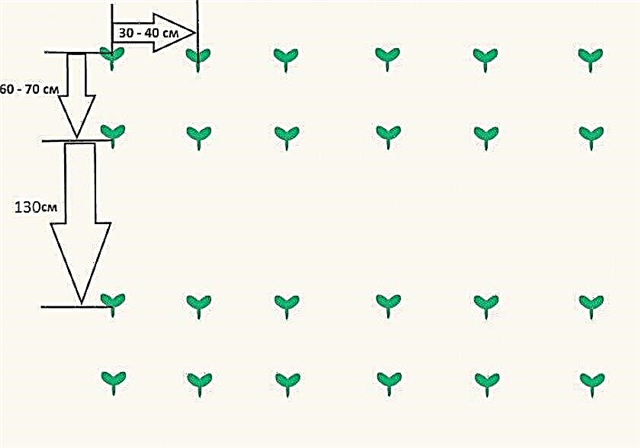
It is necessary to dig a hole 5 cm deep, water it and pour the purchased seeds there, without soaking, 2-3 pieces each. The average time for seedlings to appear is 1 week. If more than 1 seed germinates, seedlings must be thinned, leaving the strongest sprout.
Important! Do not waste time on independent procurement of seeds, because only the seed bought in the store sprouts from hybrid varieties.
In areas where there is a danger of frost, you can mulch the soil around the seedlings or use cover with a film.
Growing seedlings
Seeds for seedlings are sown 3 weeks before planting in open ground:
- in late April in a warm climate;
- in early May in a cold climate.
For this:
- Prepare any small-sized container - general or individually for each plant. The latter option is less traumatic for the root system during transplantation into open ground, because allows you to transfer the seedlings along with the land in which it grew.
- Pour soil into the tank, preferably special for seedlings, pour it.
- To a depth of 4 cm, lower the seed with its tip down.
- Transfer the container to a warm, dark place with a temperature of at least 25 ° C.
- After 4 days, when the shoots appear, put the container near the southeast window, but not on the windowsill, so that there are no drafts.
- Start gradually taking out the two-week seedlings to a cooler place where the temperature will not drop below 13 ° C (the first time - by 0.5 hours, increase the time every day). Be sure to protect from direct sunlight.
- After another week, dig holes, water, plant seedlings on the site, sprinkling with soil to cotyledon leaves.
- To protect against frost, seedlings can be covered.

When watering, focus on the dryness of the soil, if its top layer is dry, then take warm water at a temperature of 25 ° C and lightly water it.
How to Care for Cavili Zucchini
Caring for Cavili includes:
- watering;
- loosening;
- mulching;
- fertilizer application;
- protection against diseases and pests.
Watering
The main requirements for watering Cavili are moderation and warm water.
Approximately watering the hybrid can be done as follows:
- Before the fruits - 1 time per week, not more than 12 liters per 1 m² of bed area.
- After their appearance - with an interval of 2-3 days no more than 15 liters per 1 m².
Important! Dig a little soil 20 cm deep to check if that amount of water is sufficient - normally it should be moist.
Set the water prepared for irrigation in the morning in the sun, so that by evening it will become warm. In the evening, pour it under the root of the plant. To protect the fruits from rotting, you can make a substrate under them.
Loosening and mulching
If you planted seeds when they sprout, you need to loosen the soil around them. The earth around seedlings is loosened 3-4 days after planting.
You can reduce the frequency of watering using mulch, which is scattered under a bush. For this purpose, crushed hay or peat, sawdust are used.

Top dressing
When grown in open ground, Cavili is fed three times:
- During the formation of buds.
- When the flowers bloomed.
- When the fruits ensued.
If mineral fertilizers were applied during the preparation of the soil, then manure can be fed with diluted water (1 liter of manure 10 liters of water) or weeds infused with water. Before applying dressing, the bushes need to be watered, it should not fall on the leaves.
Diseases and Pests
This variety is characterized by good resistance to diseases and harmful insects, but can be damaged if grown incorrectly.
Such diseases are dangerous for the plant:
- Peronosporosis - the signs of the disease are large spots, first white, then brown on the leaves and a dirty green coating on their back, the leaves dry out and break off. For treatment, use Tsineba, Barrier, Oksikhom.
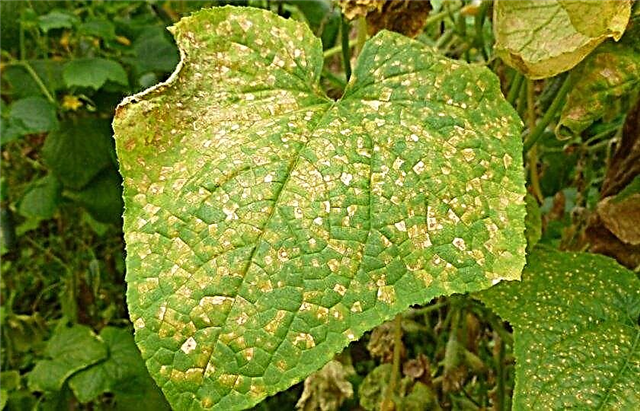
- Anthracnose - the symptoms are dirty yellow spots on the leaves, their twisting, dying off, light pink dents on the fruits. For treatment, Bordeaux fluid is used, a suspension of copper oxychloride.
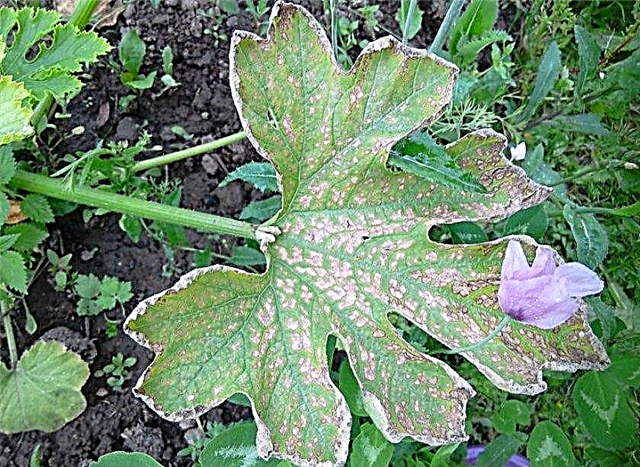
For prevention in the fall, the plot is cleaned of the remaining plants, adhere to crop rotation rules, and follow the planting scheme.
Cavili can affect such pests:- Spider mite - Symptoms are faint white dots on the leaves and a thin web on their back. To get rid of them, use tincture of onions, red pepper and laundry soap, preparations Spark, Confidor, Fosbetsid, less commonly - Karbofos.
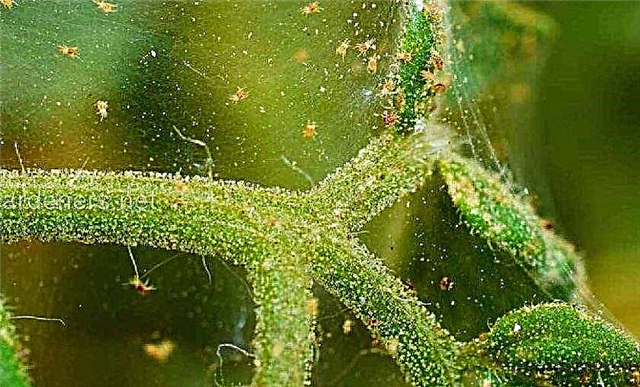
- Gourd aphids - you can find them on the back of the leaves, ovary, stems. You can destroy insects with the help of Karbofos.
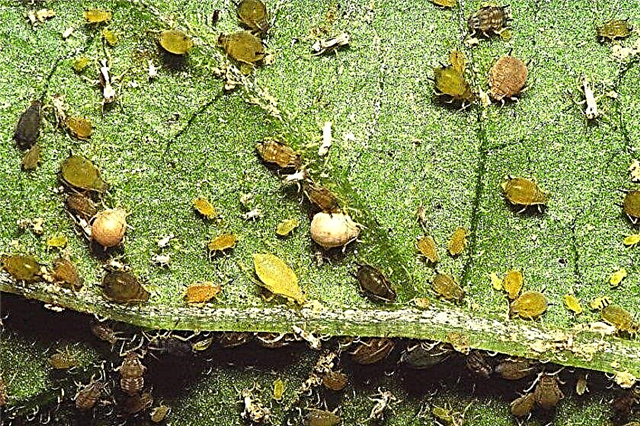
As a prophylaxis against spider mites, marigolds (Chernobrivtsi) can be planted nearby, from aphids - regularly weed weeds and harvested plant debris in autumn.
When to harvest and how to store crops
Although the zucchini remaining on the bushes after ripening remains tasty, it is better not to delay harvesting, otherwise the plant will not have enough strength to ripen other fruits. When the fetus reaches 20-22 cm in length, it can be plucked. This usually happens in July and lasts until the end of August.
If you plan to store zucchini, then when harvesting, you must leave the stalk. For storage in the cellar, wooden flooring is made and Cavili is laid on it with 1 layer. In an apartment, you can store it in a cold pantry or in the dark corner of the balcony, each of which is wrapped in paper. Shelf life is 2 months.
You can use the refrigerator for storage, where it can lie for no more than a month.Thus, the hybrid variety of Cavili squash is a delicious fruit that you can get with minimal care quite quickly. However, it is necessary to observe the rules of crop rotation and provide the bushes with enough space for growth. Also remember that for planting you will need to buy seeds every year.









